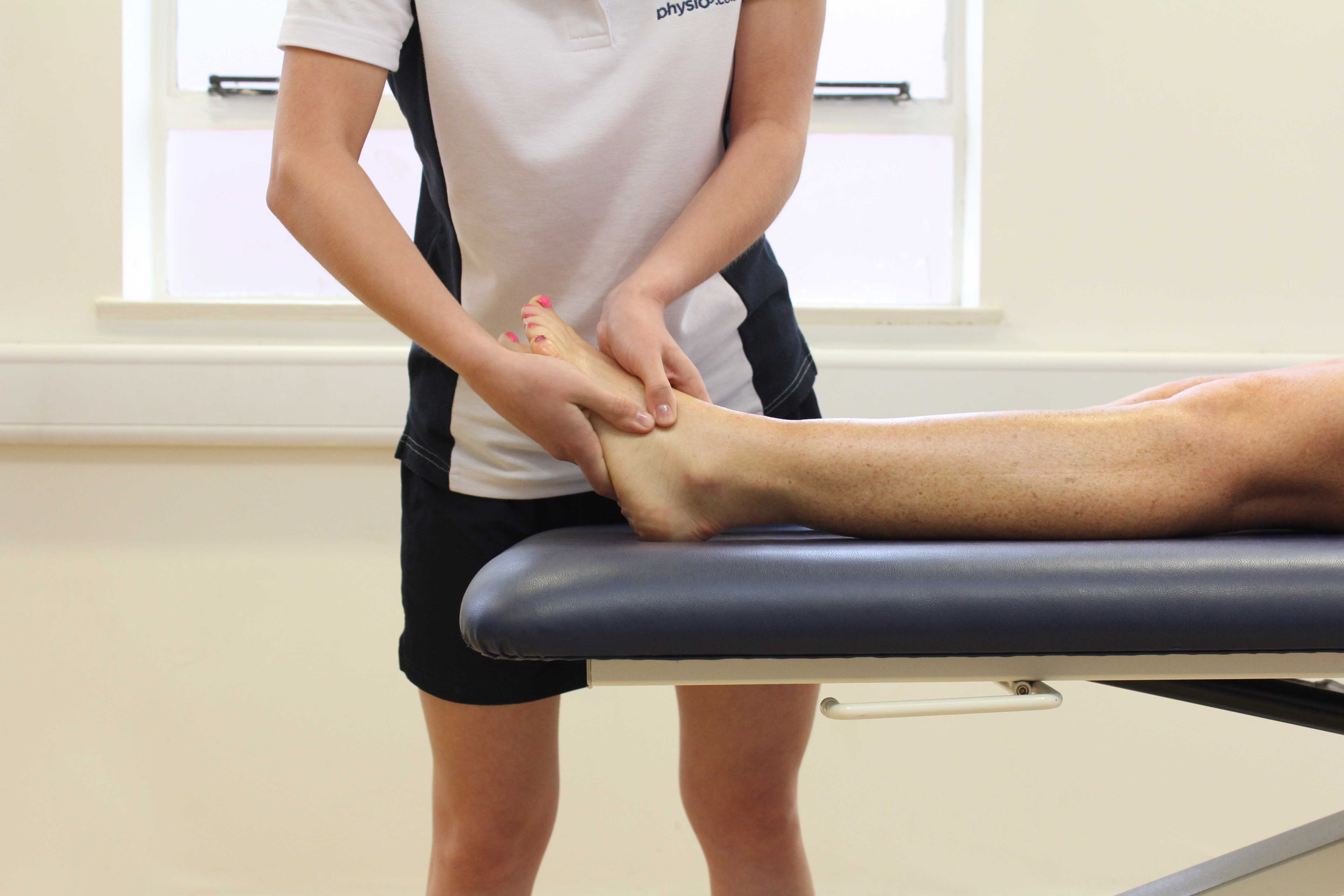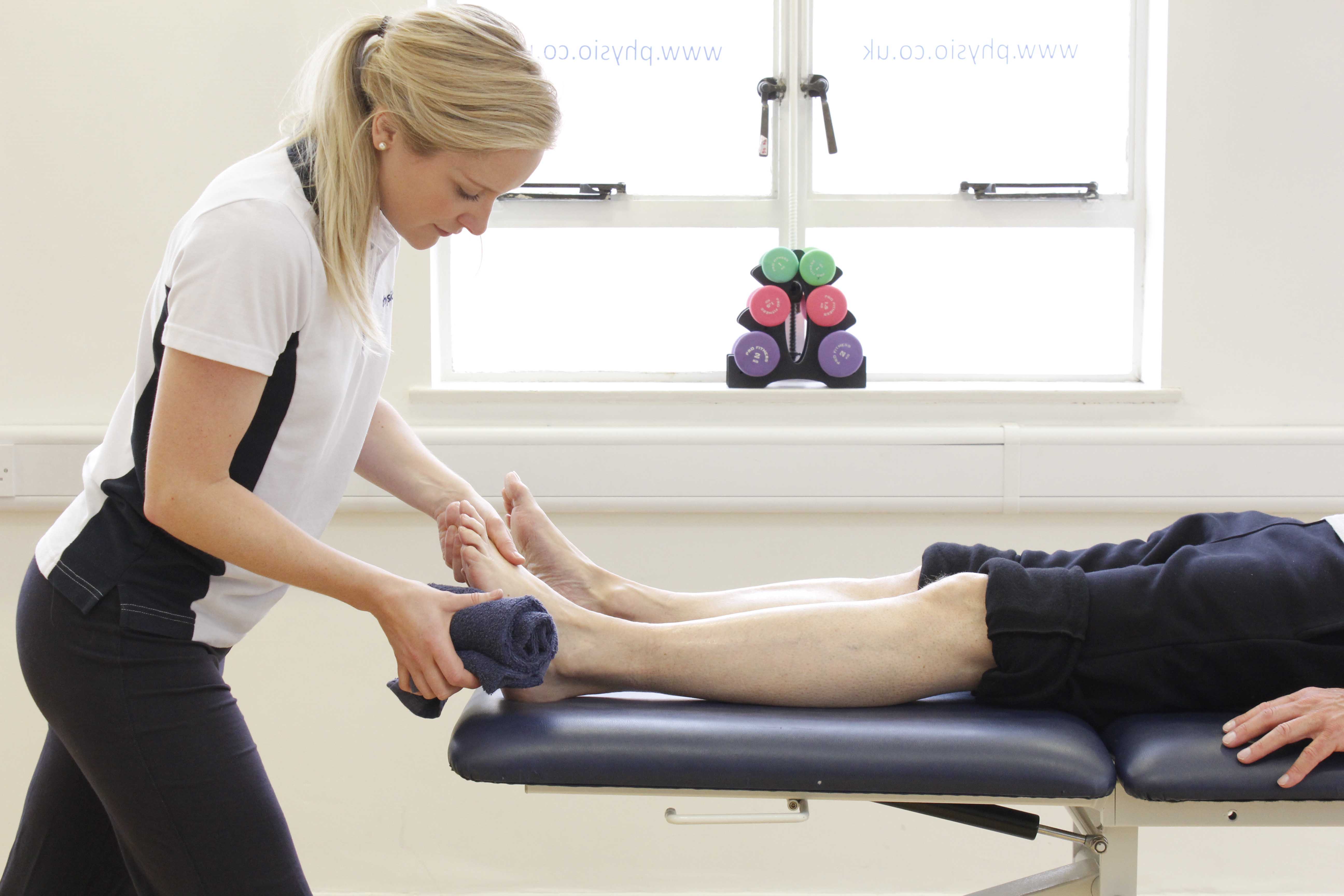What is a stress fracture of the navicular?
The navicular is a bone in the foot. It is situated at the highest point of the arch of the foot. A stress fracture of the navicular bone is an incomplete fracture or crack of this bone. Physiotherapy is important treatment for a stress fracture of the navicular.
How does a stress fracture of the navicular happen?
Stress fractures of the navicular result from an imbalance between bone formation and bone resorption (removal). Weight-bearing activities such as running or dancing increase the stresses on the navicular bone in the keystone position of the arch, causing its bone turnover to increase. This is necessary for it to live up to your demands on it.
If stress is put on the navicular, areas of the bone can become damaged. These damaged areas of bone are then resorped (removed) and replaced with new bone. If the new bone formation is slower than the resorption (removal) of the old bone, weak points occur at areas of stress within the navicular. An area of weakness in the bone can develop into a stress fracture if the weak area of the navicular is repeatedly stressed.
A recent change in training can often be a factor in the development of a stress fracture. This could involve a change in frequency, duration, intensity, training surfaces or footwear.
 Above: Friction massage applied to the foot by specialist therapist
Above: Friction massage applied to the foot by specialist therapistWhat are the symptoms of a stress fracture of the navicular?
Stress fractures of the navicular bone cause vague symptoms. Pain normally radiates up the arch immediately after sprinting or jumping activities. Navicular stress fractures to not behave as other lower limb stress fractures do. Pain can radiate into many different places in the foot including; the 2nd and 3rd toes, the outside border of the foot, the inside aspect of the heel and the inside of the arch. These symptoms are caused by the anatomy of the nerve supply of the foot. The pain will decrease with rest and allow the patient to run or jump again. However, if not allowed to completely heal, the pain usually returns. A reduction in symptoms at rest does not indicate a healed fracture.
Additional symptoms include:
What should I do if I have a stress fracture of the navicular?
If you have pain across the top, central, inside and outside areas of the foot, you may have a navicular stress fracture. The navicular bone has a very poor blood supply and its healing capacity is, therefore, reduced. If you suspect a stress fracture, you should go to your G.P. or nearest accident and emergency department for further investigation.
What shouldn’t I do if I have a stress fracture of the navicular?
If you have a suspected stress fracture of the navicular, you should not continue to exercise. A stress fracture is an area of weakness in the bone and further activity could cause further damage and even a complete bone fracture.
 Above: Mobilisations and stretches of the foot and ankle by specialised therapist
Above: Mobilisations and stretches of the foot and ankle by specialised therapistPhysiotherapy treatment following a stress fracture of the navicular.
In most cases of navicular stress fracture, treatment is with a period of non-weight-bearing in a cast is the treatment of choice. Surgery is also a treatment option. Following your initial management, your physiotherapist will be able to devise a progressive programme of exercises for your return to activity. Your physiotherapist will also assess why you developed a stress fracture of your navicular and address this during your rehabilitation.
Other treatment includes:
Could there be any long-term effects from a stress fracture of the navicular?
The navicular bone has a poor blood supply and fractures of it are renowned for non-union (not healing). The earlier treatment is received, the better the long term prognosis. Surgery may be required to ensure the fracture completely unites and heals.
To arrange a physiotherapy assessment call Physio.co.uk on 0330 088 7800 or book online.

 0330 088 7800
0330 088 7800


































